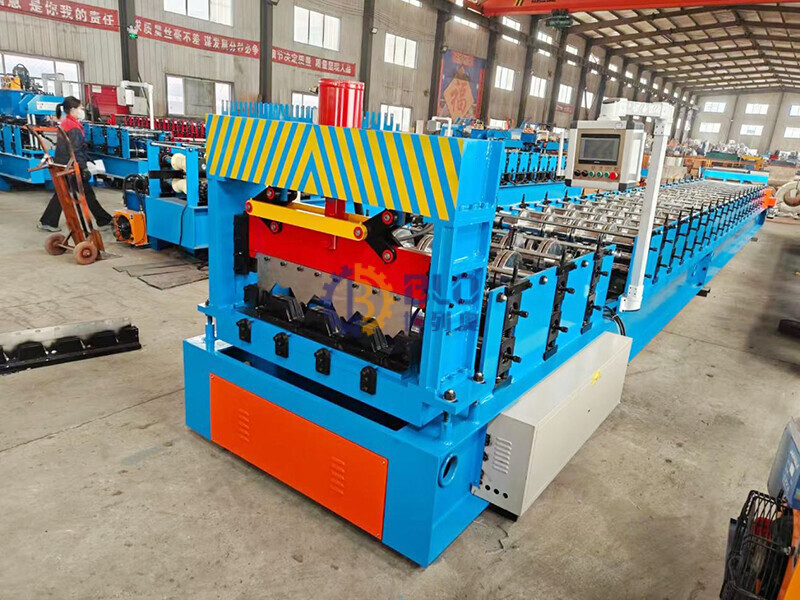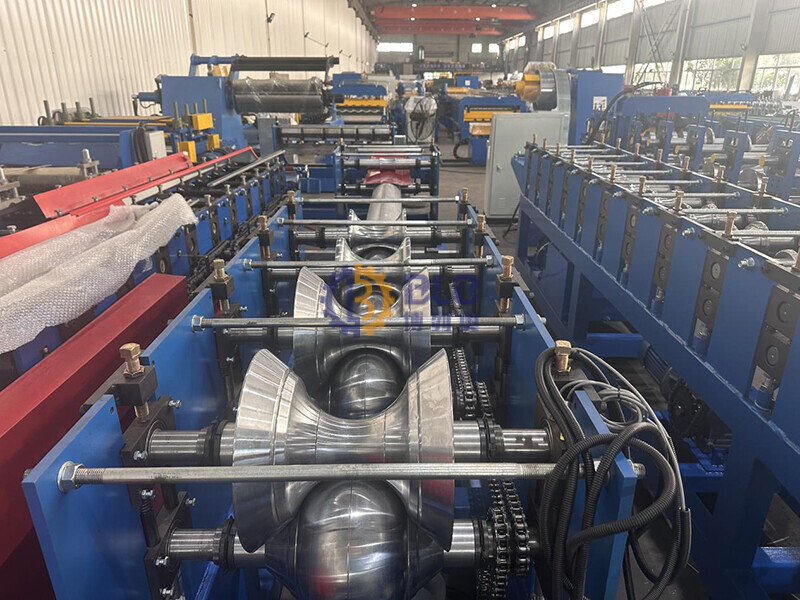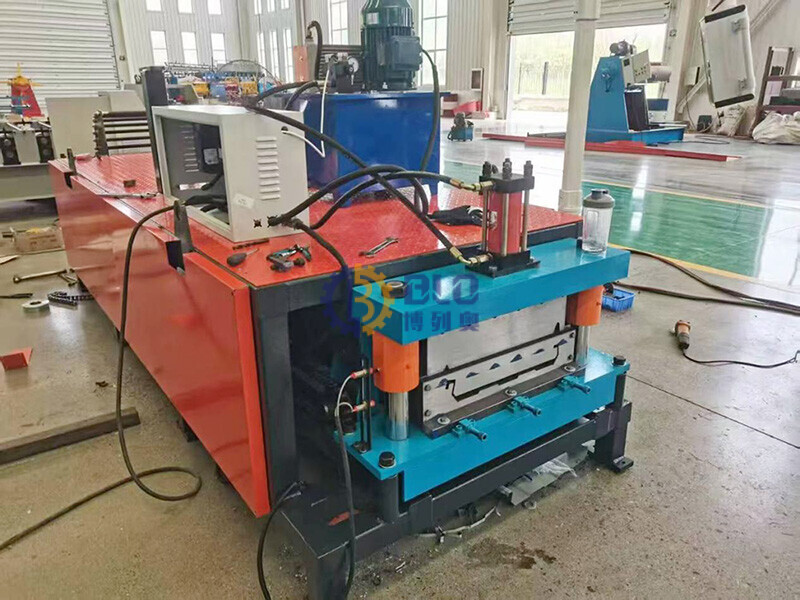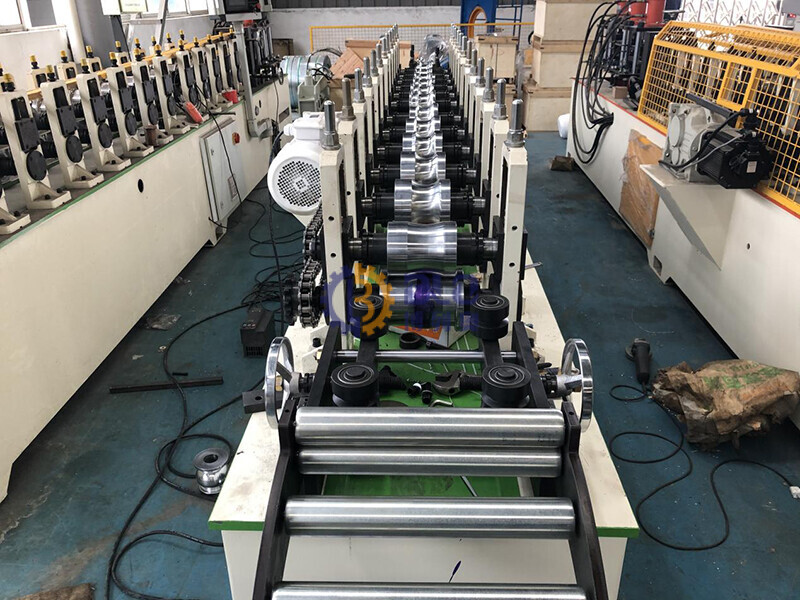Key Components & Functions
1. Uncoiler/Decoiler: Holds and feeds the large parent metal coil into the slitting line. Often includes a tension control system to ensure smooth unwinding.
2. Slitting Unit: Uses rotary knives or shear blades to cut the wide metal coil into multiple narrower strips.Blades can be crush-cut (for thicker materials) or razor-cut (for thin, precise slitting).
3. Edge Trimming (Optional) :Removes irregular edges for better-quality strips.
4. Guiding & Straightening System (Optional):Ensures flatness and proper alignment before recoiling.
5. Recoiler/Tension Rewinder:Rewinds the slit strips into smaller coils with controlled tension to prevent defects.May include a mandrel or dual-drum system for tight winding.
6. Control Panel & Sensors :Modern machines use PLCs (Programmable Logic Controllers) for automation, tension control, and speed adjustment.
Types of Compact Slitting & Recoiling Machines
Standard Compact Slitter: For general-purpose metal processing (steel, aluminum, copper).
High-Speed Slitter: Optimized for thin materials (foils, thin-gauge steel).
Heavy-Duty Slitter: For thick or hard metals (stainless steel, high-tensile alloys).
Common Applications
Automotive: Slitting steel/aluminum coils for body panels, trim parts.
Construction: Processing metal coils for roofing, cladding, or framing.
Appliances & Electronics: Cutting precision strips for components.
Packaging: Producing narrow metal strips for cans or containers.
Advantages of Compact Machines
Space Efficiency: Smaller footprint than traditional slitting lines.
Cost-Effective: Lower energy consumption and easier maintenance.
Flexibility: Handles various materials (steel, aluminum, copper) and thicknesses.
Precision: Ensures consistent strip width and edge quality.
Key Considerations When Choosing a Machine
Material Type & Thickness: Ensure compatibility with your metal grades.
Slitting Width Range: Minimum/maximum strip widths needed.
Production Speed: Throughput (meters/min or feet/min).
Automation Level: Manual vs. CNC-controlled systems.
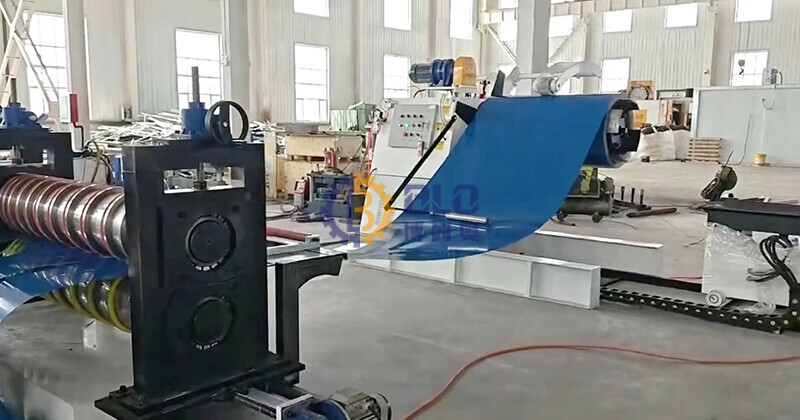
Latest Post
 What is floor deck roll forming machines?2025-09-19
What is floor deck roll forming machines?2025-09-19 Roof Ridge Tile Forming Machine2025-09-12
Roof Ridge Tile Forming Machine2025-09-12 Portable Jiaochi Tile Pressing Machine 820mm Effective Width2025-09-05
Portable Jiaochi Tile Pressing Machine 820mm Effective Width2025-09-05 Precision & Power: Unleash Efficiency with BLO's Cover Plate Roll Forming Machine2025-08-28
Precision & Power: Unleash Efficiency with BLO's Cover Plate Roll Forming Machine2025-08-28 The Ultimate Guide to Shutter Door Roll Forming Machine2025-08-22
The Ultimate Guide to Shutter Door Roll Forming Machine2025-08-22
Ask For A Quick Quote
If you are looking for more information on our services, or how we could potentially help, we would love to hear from you!

